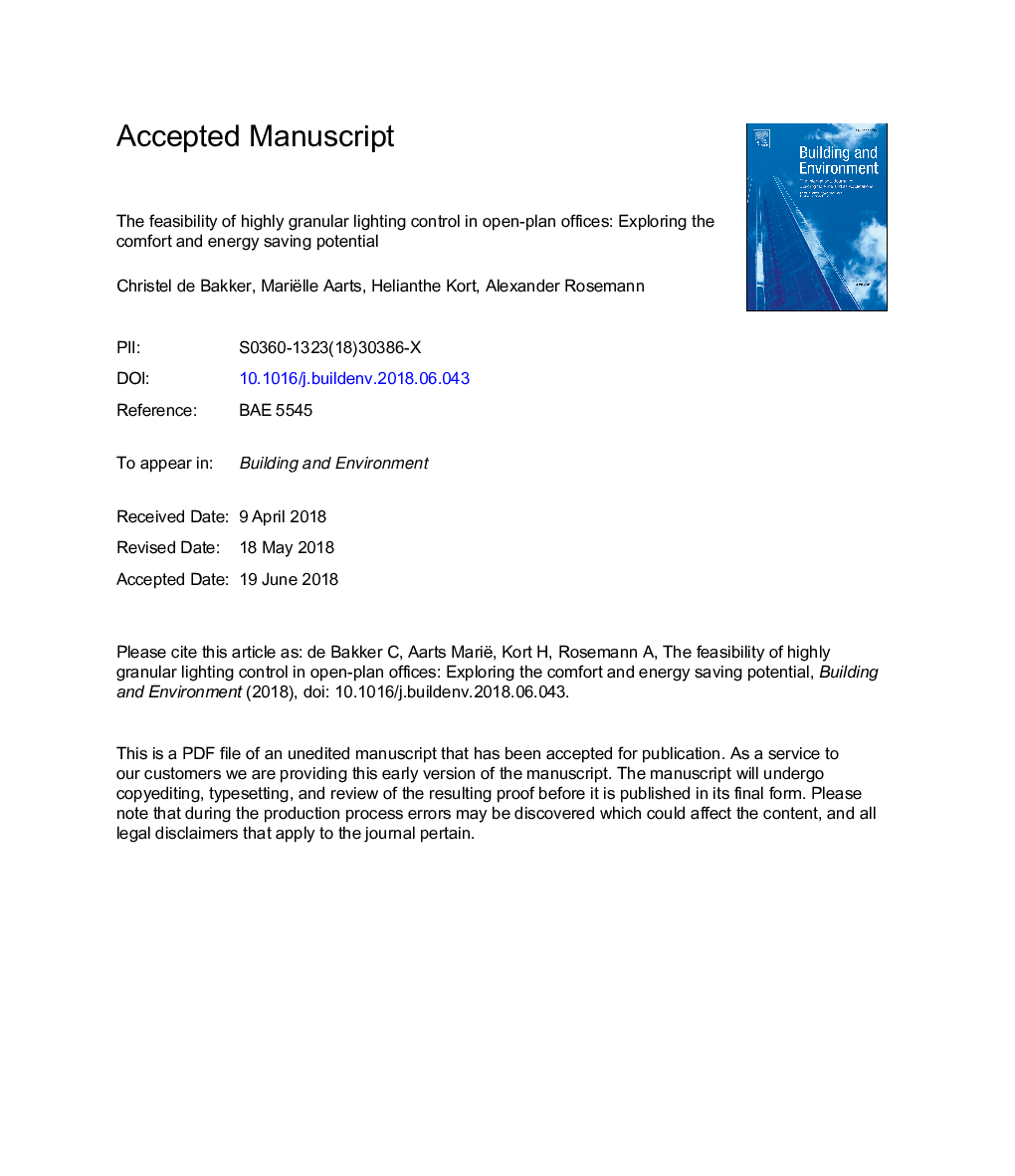| Article ID | Journal | Published Year | Pages | File Type |
|---|---|---|---|---|
| 6696868 | Building and Environment | 2018 | 36 Pages |
Abstract
Highly granular lighting control reduces the energy consumption of shared office spaces by automatically controlling lighting at unoccupied desks. Typically, lighting is switched off, but this approach results in non-uniform illuminance distributions. In offices where individual work areas are often not separated by partitions and occupants oversee the entire office space, a dimming approach might be more comfortable. Therefore, this study tests the feasibility of a new concept that involves the use of different dimming levels in the task, surrounding, and background area. We evaluated this concept on both user comfort and the energy use through a user study in a controlled environment (final Nâ¯=â¯25). From this work, we concluded that most users (68-84%) are comfortable with different dimming levels throughout a workspace. Initial energy calculations based on assumed activity patterns showed promising results for the four most extreme dimming scenarios (LDP reductionâ¯>â¯26%). We identified two conditions as most promising in achieving both energy savings and comfort, namely when the dimming level was at minimum in the background area of the office space. These findings encourage research to continue investigating individual occupancy-based dimming as it has high practical value in the increasing smart office environment.
Related Topics
Physical Sciences and Engineering
Energy
Renewable Energy, Sustainability and the Environment
Authors
Christel de Bakker, Mariëlle Aarts, Helianthe Kort, Alexander Rosemann,
